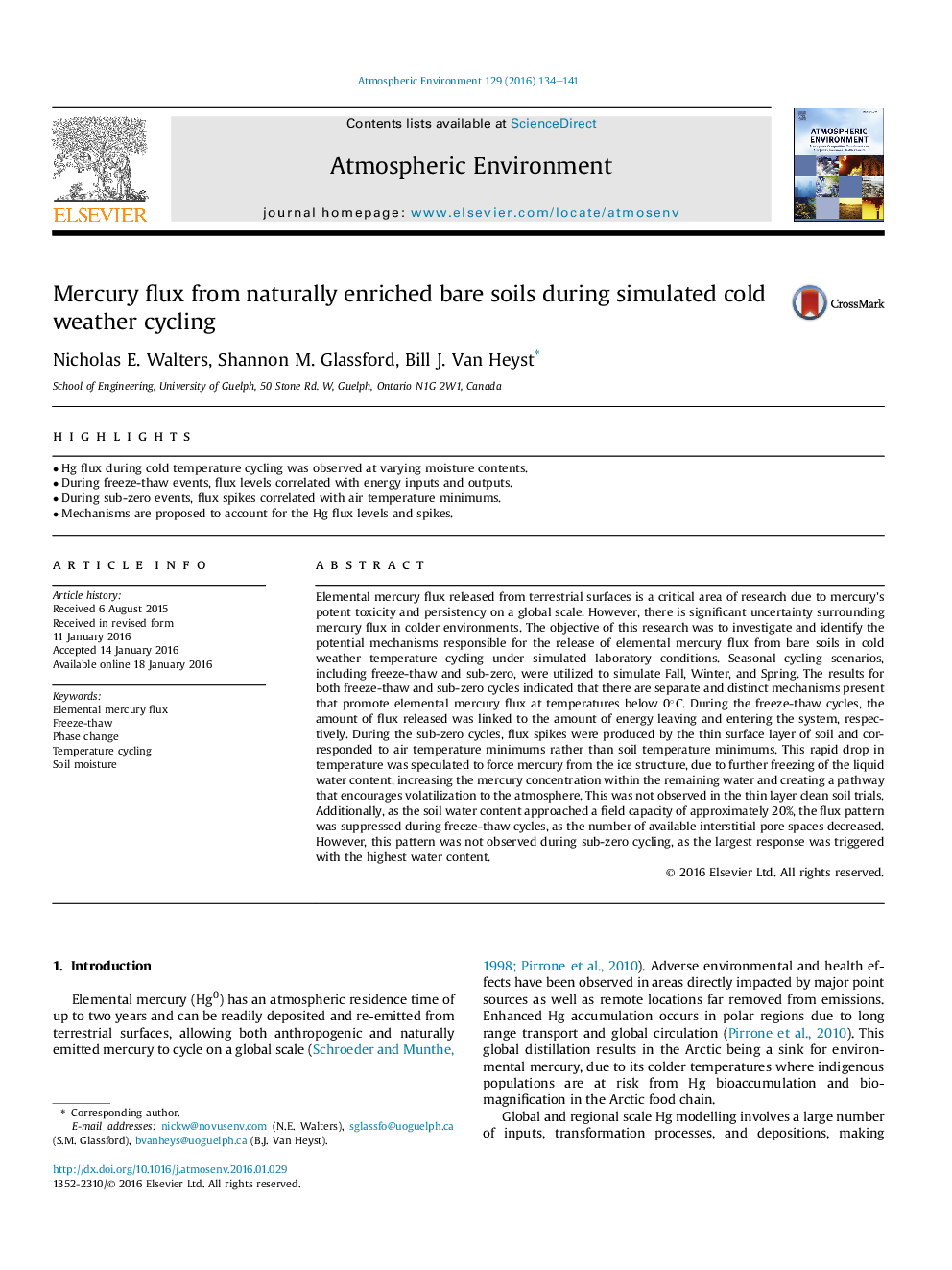| Article ID | Journal | Published Year | Pages | File Type |
|---|---|---|---|---|
| 6336809 | Atmospheric Environment | 2016 | 8 Pages |
Abstract
Elemental mercury flux released from terrestrial surfaces is a critical area of research due to mercury's potent toxicity and persistency on a global scale. However, there is significant uncertainty surrounding mercury flux in colder environments. The objective of this research was to investigate and identify the potential mechanisms responsible for the release of elemental mercury flux from bare soils in cold weather temperature cycling under simulated laboratory conditions. Seasonal cycling scenarios, including freeze-thaw and sub-zero, were utilized to simulate Fall, Winter, and Spring. The results for both freeze-thaw and sub-zero cycles indicated that there are separate and distinct mechanisms present that promote elemental mercury flux at temperatures below 0°C. During the freeze-thaw cycles, the amount of flux released was linked to the amount of energy leaving and entering the system, respectively. During the sub-zero cycles, flux spikes were produced by the thin surface layer of soil and corresponded to air temperature minimums rather than soil temperature minimums. This rapid drop in temperature was speculated to force mercury from the ice structure, due to further freezing of the liquid water content, increasing the mercury concentration within the remaining water and creating a pathway that encourages volatilization to the atmosphere. This was not observed in the thin layer clean soil trials. Additionally, as the soil water content approached a field capacity of approximately 20%, the flux pattern was suppressed during freeze-thaw cycles, as the number of available interstitial pore spaces decreased. However, this pattern was not observed during sub-zero cycling, as the largest response was triggered with the highest water content.
Related Topics
Physical Sciences and Engineering
Earth and Planetary Sciences
Atmospheric Science
Authors
Nicholas E. Walters, Shannon M. Glassford, Bill J. Van Heyst,
